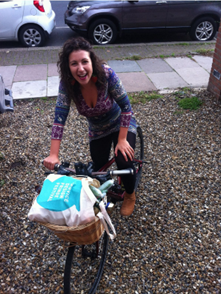After unanimous nods of agreement from the SDFF team a few months back urged on by Lior (Festival Founder); it was clear that we wanted to make progress in the area of Diversity & Inclusion (D&I) in the Service Design Industry. And we wanted to use the Festival this year (and forever) to do this.
For us this wasn’t about empty D&I chat. We see diversity and inclusion as a social good that should be embraced by all, especially change makers and designers. And we don’t want to just talk – but do something, maybe even lead by example if we could! We had a few ideas lined up which included shaping our internal D&I principles, but we knew our biggest challenge would be beginning the external engagement needed to feed into our thinking.
So, we did the unthinkable…. drum roll…. we welcomed a diverse bunch of designers to come and design stuff with us! Our focus was on ideas on how the festival could improve our diversity and inclusion - with a focus on ethnicity which was evidently poor at last year’s festival. We also wanted thoughts/ideas for the wider sector. It was a gutsy attempt – but proved worth-while.
Firstly, people actually turned up (phew). Then after some initial exploring of our understanding of diversity and inclusion, we focused most of our creative energy on small groups creating a party manifesto for the design sector, which addressed pain-points we identified. Each group had to present their manifesto to the group. Great ideas emerged! It was fun. There were commonalities. Healthy tensions. But most importantly, there was rich conversation!
The conversation was the best bit. Individuals opening up about their often-silent views, observations and gripe. It was absolutely fascinating to watch voices emerge on a topic that can be very sticky. And we certainly had a couple of ‘low level’ sticky moments. It was great. Those moments are key. They hold us in a place of uncomfortably. Forcing us to sit with it and work through complexity. We/organisations must get better at sitting with sticky stuff attached to D&I, but not for too long that no action is taken!
It then dawned on me. How often do we put ourselves in a room with different people talking about D&I? For many of us we don’t – and we should. We are and contributed to through conversations. And although some great ideas emerged from the workshop, the value of what we discovered through conversation was the true gem. In fact, the designers wanted more discovery!
















